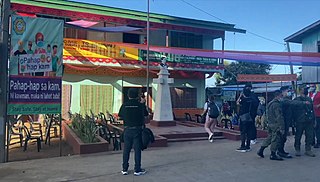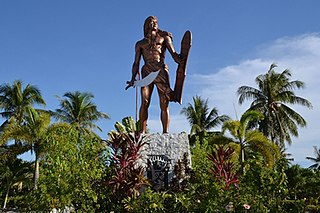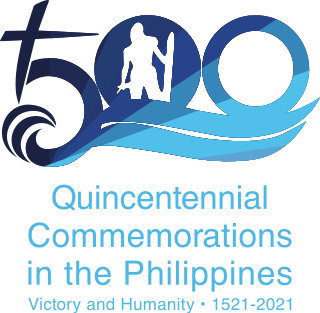
Tawi-Tawi, officially the Province of Tawi-Tawi, is an island province in the Philippines located in the Bangsamoro Autonomous Region in Muslim Mindanao (BARMM). The capital of Tawi-Tawi is Bongao.

Mapun, officially the Municipality of Mapun, is a 4th class municipality in the province of Tawi-Tawi, Philippines. According to the 2020 census, it has a population of 30,038 people.

General Salipada K. Pendatun, officially the Municipality of General Salipada K. Pendatun, is a 4th class municipality in the province of Maguindanao del Sur, Philippines. According to the 2020 census, it has a population of 31,263 people.

The Sheikh Karimul Makhdum Mosque is located in Barangay Tubig Indangan, Simunul, Tawi-Tawi, the Philippines. It is the oldest mosque in the Philippines and in Southeast Asia.

Historical markers are installed by the National Historical Commission of the Philippines (NHCP) and its predecessor agencies in the Philippines and places abroad that signify important and historic events, persons, structures, and institutions. The commemorative plaques are permanent signs installed by the NHCP in publicly visible locations on buildings, monuments, or in special locations. The NHCP also allows local municipalities and cities to install markers of figures and events of local significance, although these markers are barred from using the seal of the Republic of the Philippines.
Roderick "Derrick" Columnas Macutay is a Filipino mural artist and contemporary painter, known for his distinctive subject of surreal portraits of humans, robots, cyborgs and android like creatures and his signature color of monochrome blue usually with a vibrant accent color. His works range from mural paintings to oil paintings and illustrations.

The first documented Catholic Mass in the Philippines was held on March 31, 1521, Easter Sunday. It was conducted by Father Pedro de Valderrama of Ferdinand Magellan's expedition along the shores of what was referred to in the journals of Antonio Pigafetta as "Mazaua".

The Police Regional Office Bangsamoro Autonomous Region, also known as the Bangsamoro Police, is the regional office of the Philippine National Police meant to cover the whole Bangsamoro autonomous region.

Elcano & Magellan: The First Voyage Around the World is a 2019 Spanish animated adventure film directed by Ángel Alonso and written by José Antonio Vitoria and Garbiñe Losana. The film retells the story of 1519 circumnavigation led by Portuguese explorer Ferdinand Magellan and Spanish navigator Juan Sebastián Elcano.

Mactan Shrine, also known as Liberty Shrine, is a memorial park on the island of Mactan in Lapu-Lapu City, Philippines. It hosts two monuments, namely the Magellan Monument, which is dedicated to Portuguese explorer Ferdinand Magellan and the Lapu Lapu Monument, a bronze statue which commemorates Lapu Lapu, a native leader who defeated Spanish soldiers led by Magellan in the 1521 Battle of Mactan.

The 2021 Quincentennial Commemorations in the Philippines is a series of observances organized to mark the 500th anniversary of various events in the Philippines, notably the introduction of Christianity in the Philippines, the role of the country in the Magellan–Elcano circumnavigation, and the victory of Lapulapu in the Battle of Mactan.














